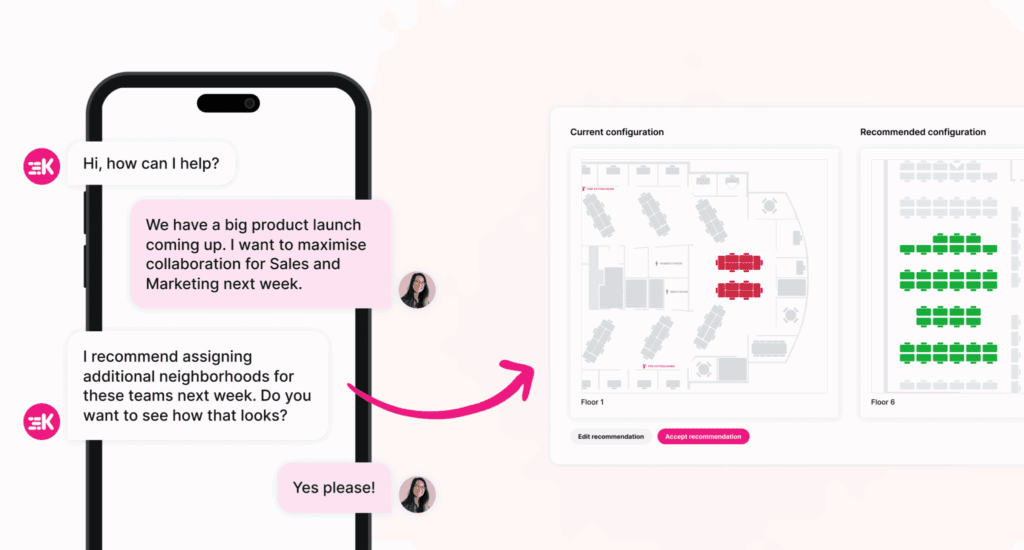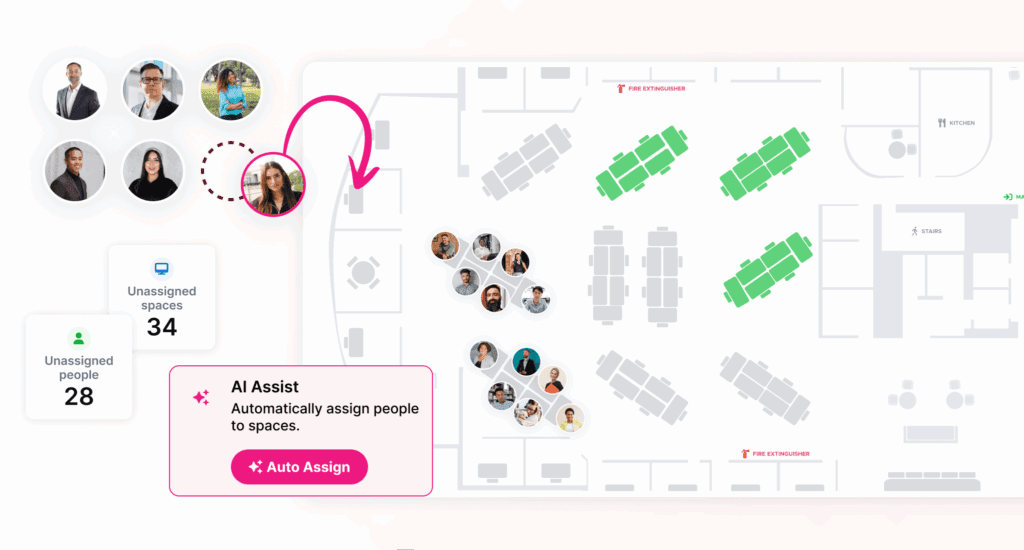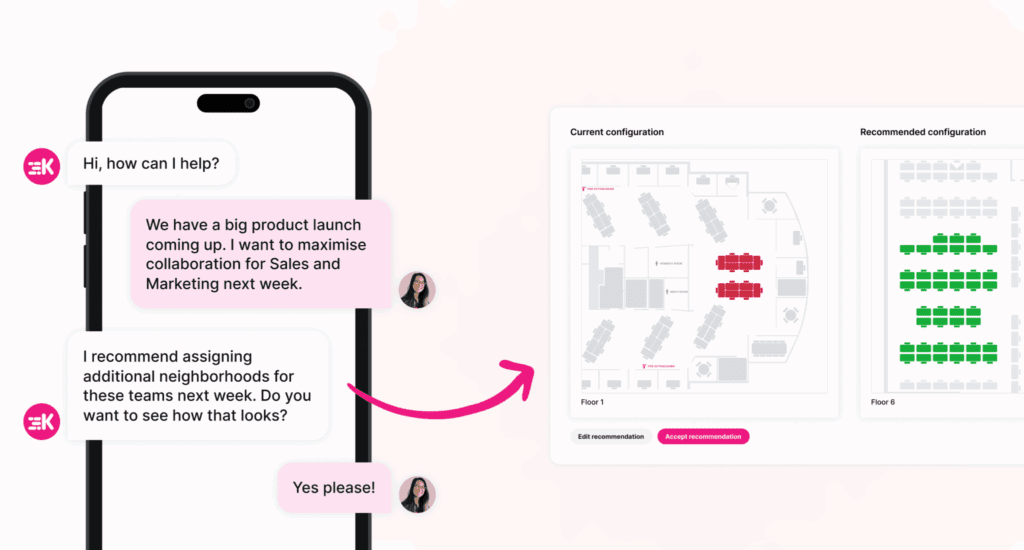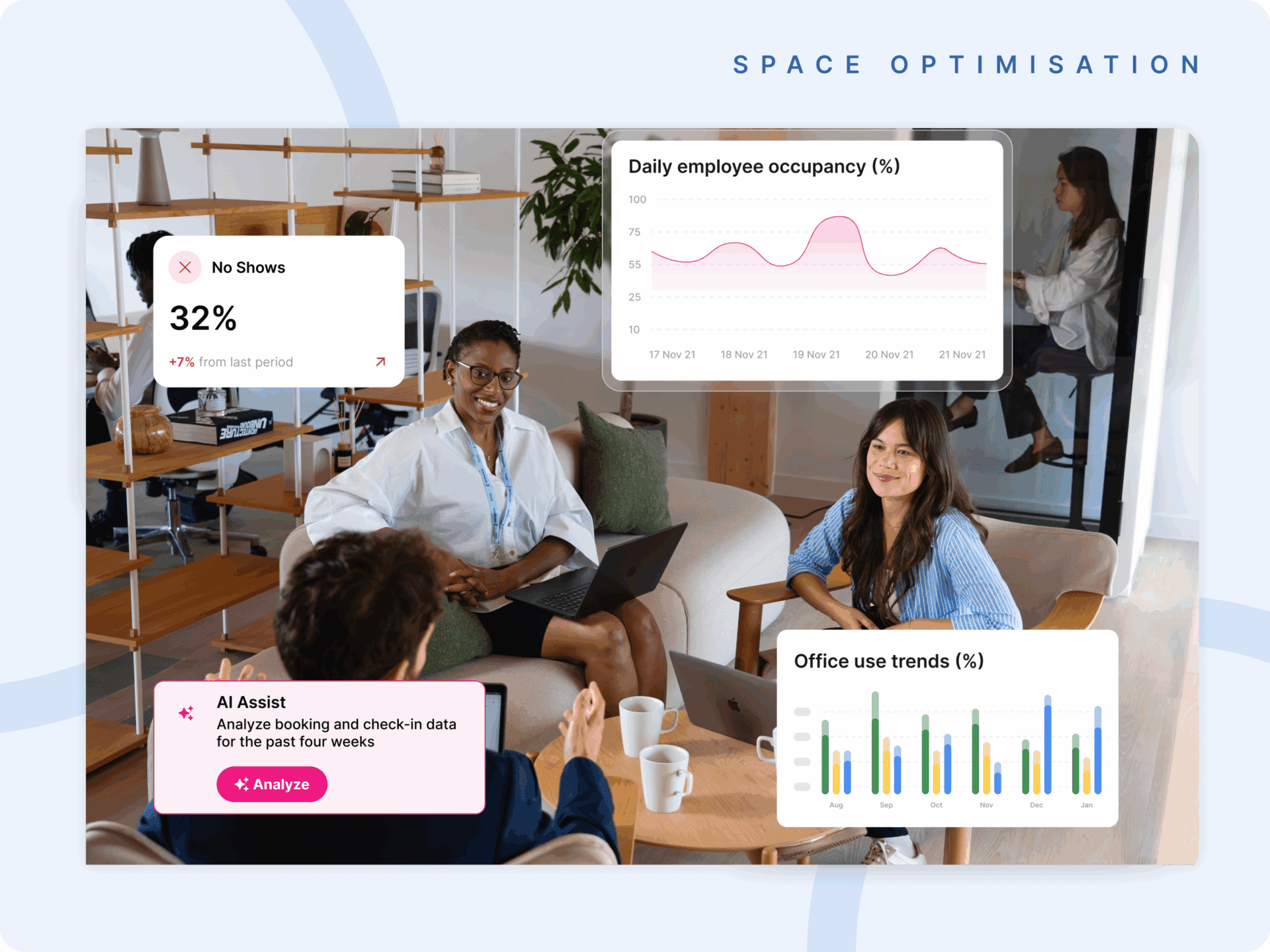For decades, companies have tried to manage the workplace with software built for buildings, not people. Computer-Aided Facilities Management, or CAFM, began as a digital leap forward for facilities teams. It helped organizations move from paper floor plans to electronic systems that tracked space, assets, and maintenance. But today, the world of work looks very different. The goal is no longer just to manage square footage. It is to orchestrate people, space, and time for measurable business outcomes.
What Is CAFM?
Computer-Aided Facilities Management (CAFM) refers to software that stores and manages data about buildings and workplace operations. CAFM systems typically combine space utilization, lease details, work orders, preventive maintenance, and moves within a single interface.
At its core, CAFM helps organizations understand and operate the physical environment—optimizing how buildings are used, maintained, and configured.

A Brief History Of CAFM
CAFM has evolved through five decades of workplace transformation.
1970s–1980s: The CAD Era And The Birth Of CAFM
As computing entered the workplace, facilities teams began digitizing floor plans using early mainframes and PCs. These tools laid the groundwork for space forecasting and basic asset tracking. By the late 1980s, CAFM systems expanded beyond drawings to include inventories, leases, and cost accounting—foundations for today’s integrated data models.
1990s: Networked CAFM And The Rise Of The Web
With networked PCs and the internet, organizations began centralizing multi-site portfolio data. This era marked the beginning of connected facility operations, linking buildings and teams across geographies.
2000s: The Integration Wave And The Rise Of IWMS
By the early 2000s, companies demanded a single view of their real estate, maintenance, projects, and space. In 2004, Gartner coined the term Integrated Workplace Management Systems (IWMS) to describe these enterprise-class suites that combined multiple CAFM functions under one umbrella.
2010s: Cloud, Mobile, And Sensors
Cloud delivery and mobile apps made CAFM tools easier to access, while IoT occupancy data brought new levels of visibility. Over time, CAFM, Computerized Maintenance Management Systems (CMMS), and IWMS platforms began to overlap as organizations demanded broader capabilities. Even IFMA’s glossary acknowledges that CAFM is now often used alongside CMMS and IWMS—a reflection of the category’s blurred edges.
2020s: The Shift To Hybrid Work And Outcome-Based Operations
The pandemic accelerated the shift from managing buildings to optimizing performance. The goal was no longer operational efficiency alone, but measurable outcomes: productivity, collaboration, cost per seat, carbon reduction, and employee experience.

CAFM vs IWMS vs CMMS
It is easy to confuse these systems because they share overlapping functions. The distinction lies in scope and focus.
- CAFM covers space management, moves, assets, and maintenance. It often integrates with CAD for floor planning and scenario testing.
- CMMS focuses on maintenance operations, preventive schedules, and work orders—most common in plants or facilities management.
- IWMS unifies corporate real estate, projects, maintenance, sustainability, and space in one platform, serving enterprise-level portfolios.
Practically, IWMS platforms address the entire portfolio. CAFM focuses on the building layer and day-to-day operations within it. CMMS manages the maintenance lifecycle.

Why CAFM Is No Longer Enough
CAFM assumes a building-first mindset: maintain assets, track space, close work orders. That remains necessary, but not sufficient, when the real mandate is workplace performance.
The office has become a dynamic ecosystem where leaders must measure impact, not just maintenance. That includes:
- Utilization and cost – right-sizing the footprint and reducing cost per employee.
- Collaboration – increasing meaningful interactions between teams.
- Experience – removing friction from booking and access to improve employee satisfaction.
- Sustainability – reducing energy per occupied hour and carbon intensity.
- Agility – supporting dynamic, team-based seating and scheduling.
If you only manage the office, you miss the reason it exists: to deliver better outcomes for people and the business.

Introducing Workplace Operations
Workplace Operations reframes the problem from facilities to outcomes. It is not just about maintaining square feet. It is about maximizing performance per seat.
A Workplace Operations platform unifies space data, bookings, schedules, occupancy signals, and analytics to plan, operate, and continuously optimize the workplace. The metrics that matter most shift from square footage to collaboration density, cost per seat, and energy per occupied hour.

Core capabilities include:
- Dynamic scheduling and booking for desks, rooms, and team days.
- Occupancy and intent signals from calendars, sensors, and Wi-Fi.
- Space optimization through scenario planning, adjacency modeling, and load balancing.
- Experience and automation, such as auto-releasing no-show bookings.
- Insights and reporting that reveal real-time utilization and collaboration patterns.
- Integrations across HRIS, calendars, and IWMS or CAFM systems.
Kadence represents this evolution. SpaceOps provides scenario planning, move management, and stack planning, while InsightsPlus closes the loop with performance data. Together, they form a single layer of intelligence for planning, measuring, and improving workplace operations at scale.
Where CAFM Fits Now
CAFM remains valuable, particularly for CAD-linked floor planning, asset management, and operational maintenance. But it now sits as one module within a broader ecosystem. IWMS platforms continue to serve real estate and sustainability needs. Workplace Operations focuses on orchestrating people, schedules, and environments to drive measurable outcomes.
CAFM still manages the building. Workplace Operations manages how the building works.

The next era of workplace technology is defined by outcomes, not oversight. Leaders no longer need another system of record. They need a system of results—a platform that connects data, people, and decisions in real time.
Kadence SpaceOps delivers that connection, uniting planning, modeling, and measurement in a single, intelligent layer of workplace control. The organizations that make this shift will stop managing facilities and start engineering performance.
Book a demo with our workplace operations experts to see it in action.





